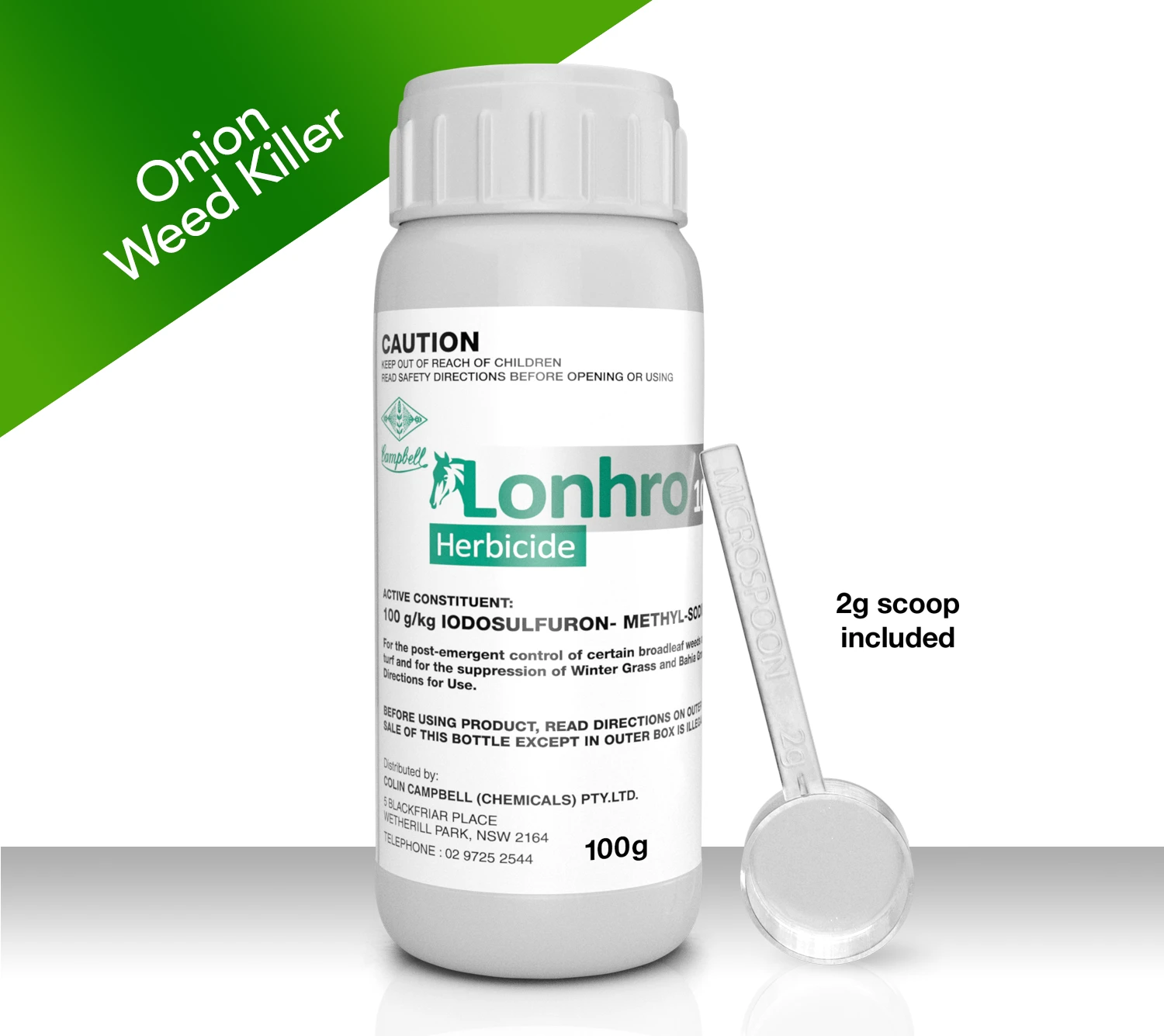Onion weed, (Nothoscordum sp) is a pesky invader that can quickly overtake gardens and lawns. Its resilient nature and rapid growth make it a common nuisance for gardeners and homeowners alike. This article discusses the distinction between onion weed and onion grass. It also introduces Lonhro and provides a guide on using Lonhro to combat these weeds.
Identifying Onion Weed VS Onion Grass
Onion Weed (Nothoscordum spp.):
-
Leaves: Onion weed features long, slender leaves that resemble broad grass blades. These leaves are often emit an onion-like aroma when crushed or mown.
- Flowers: The plant produces delicate clusters of small, star-shaped white flowers that extend from a stem well above the plant.
- Bulbs: Onion weed reproduces through seed as well as underground bulbs, which can make it challenging to control.
Onion Grass (Romulea rosea):
- Leaves: Similar to onion weed, onion grass boasts long, thin leaves that closely resemble grass. However, these leaves are typically round in cross-section rather than triangular.
- Stems: Onion grass has hollow, cylindrical stems that are much finer and darker green than the onion weed.
- Flowers: The plant produces small clusters of purple flowers that form close to the ground.
Introducing Lonhro: An Effective Solution
Lonhro is a highly effective herbicide specifically designed for controlling onion weed and onion grass. Its formulation targets these invasive plants whilst being safe on Buffalo, Kikuyu, Couch and Zoysia. The leaves absorb Lonhro’s active ingredient and it moves into the bulbs for a thorough kill.
How to kill onion weed: Using Lonhro
1.Assessment and Preparation:
Before applying Lonhro to get rid of onion weed, assess the extent of the onion weed or onion grass infestation. Remove any debris from the area and make sure to shield nearby desirable plants from potential overspray.
2. Application:
- Timing: Apply Lonhro when the onion weed or onion grass is actively growing and at its most vulnerable stage.
- You can apply Lonhro as a foliar spray using a sprayer with a fine nozzle. Ensure thorough coverage of the foliage. For best results use a surfactant such as Spreadwet to ensure the herbicide sticks to the leaves.
- Dilution: Follow the instructions for dilution. Mix the appropriate amount of Lonhro with water as directed.
3. Applying Lonhro Safely:
- Protective Gear: Wear protective clothing and equipment as required by the label to prevent contact with the herbicide.
- Weather Conditions: Apply Lonhro on a calm day to prevent drift and on a day without rain in the forecast
4. Post-Application Care:
- Avoid Disturbance: Refrain from disturbing the treated area for at least 24 hours after application.
- Monitoring: Regularly monitor the treated area for signs of onion weed or onion grass decline. It may take some time for the herbicide to take effect.
More about Lonhro
Dealing with onion weed and onion grass can be challenging. However, by correctly identifying them and utilising Lonhro and the appropriate techniques, you can regain control over your outdoor areas.
Lonhro is also effective on slowing down Wintergrass, killing Burr Medic, Oxals, Clover and even ryegrass in lawns.
Lonhro is not suitable for lawns with Blue Couch or other cool season grasses like rye, tall fescue, and kentucky bluegrass.
